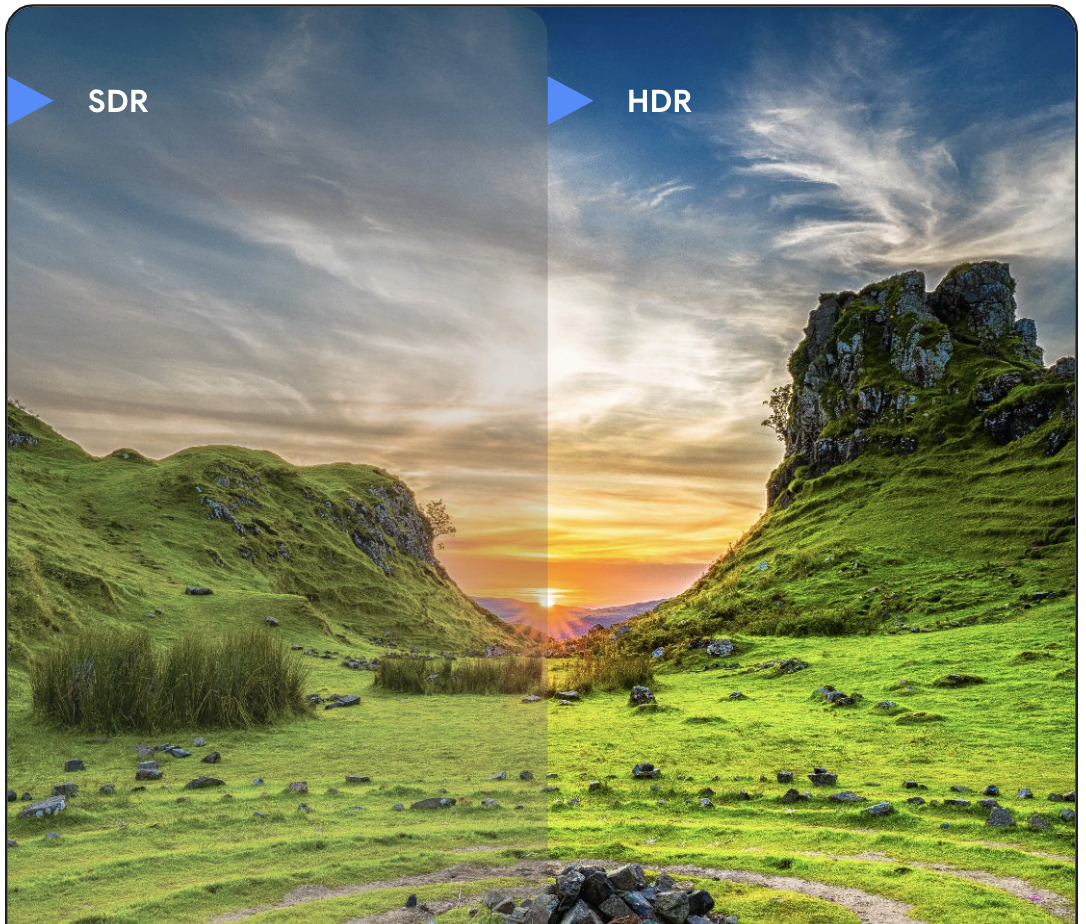Le format d'image Ultra HDR permet aux images de stocker plus d'informations sur l'intensité de la lumière, ce qui permet de créer des tons clairs et des ombres plus détaillés et des couleurs plus intenses. Cette section fournit des informations pour aider vos applications à prendre en charge correctement les images Ultra HDR.

- Les appareils peuvent afficher des images Ultra HDR en pleine intensité s'ils exécutent Android 14 ou version ultérieure et s'ils disposent d'un écran compatible avec la technologie HDR. Sur d'autres appareils, les images s'affichent toujours, mais en plage dynamique standard.
- Les appareils peuvent capturer des images Ultra HDR s'ils exécutent Android 14 ou version ultérieure et disposent d'appareils photo compatibles HDR.
- Tous les appareils Android peuvent partager des images Ultra HDR, même s'ils ne sont pas compatibles avec l'Ultra HDR. Par exemple, si un utilisateur dispose d'un téléphone équipé d'Android 13, qu'il reçoit une image Ultra HDR dans le chat et la transfère à un ami disposant d'un appareil équipé d'Android 14 compatible HDR, cet ami peut afficher l'image en pleine intensité.
Documentation
Cette section contient la documentation suivante sur la prise en charge des images Ultra HDR:
- Afficher des images Ultra HDR: comment afficher correctement des images Ultra HDR lorsque votre application s'exécute sur un appareil compatible
- Modifier des images Ultra HDR: comment modifier des images Ultra HDR tout en préservant leur intensité complète
Ressources supplémentaires
Pour en savoir plus sur les images Ultra HDR, consultez les ressources supplémentaires suivantes:
Documentation
Vidéos
Exemples de code
Filmez
Écran
- Ultra HDR: rendu par défaut
- Visualiser la carte des gains
- Compresser une image Ultra HDR
- Afficher une image Ultra HDR dans Compose
- Utiliser des bibliothèques de chargement d'images avec des images Ultra HDR
